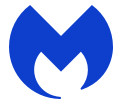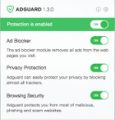What is QuantityExact
QuantityExact is an adware application that targets Mac platform. Adware is a form of malware which displays unwanted ads to the user of a computer. The ads caused by adware are sometimes in the form of a advertising link, popup, fake alert or sometimes in an unclosable window. In most cases, adware software do not have any uninstall procedures and can use technologies that are similar to those used by malicious software to penetrate the MAC platform.
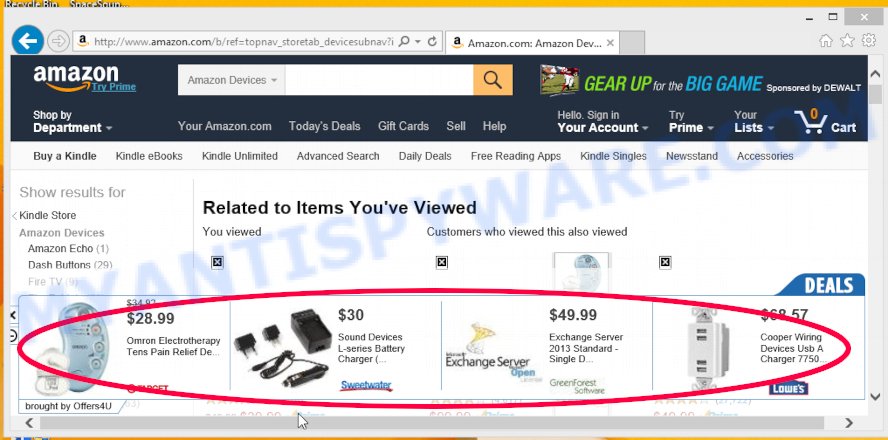
Unwanted ads
Does adware software steal your privacy information? The QuantityExact adware can gather privacy information, including:
- IP addresses;
- URLs visited;
- search queries/terms;
- clicks on links and advertisements;
- browser version information.
How does QuantityExact get on your machine
Adware usually comes on MAC computers with free applications, malicious downloads and fake updates. In most cases, it comes without the user’s knowledge. Therefore, many users aren’t even aware that their computer has been hijacked by adware. Please follow the easy rules in order to protect your MAC from adware: do not install any suspicious applications, read the user agreement and choose only the Custom, Manual or Advanced setup mode, do not rush to click the Next button. Also, always try to find a review of the installed software on the Internet. Be careful and attentive!
Threat Summary
| Name | QuantityExact |
| Type | adware, PUP (potentially unwanted program), Mac virus, Mac malware |
| Detection Names | Program:MacOS/Vigram.A, Trojan-Downloader.OSX.Adload, MacOS.Agent-MT, Osx.Adware.Cimpli, Adware.MAC.Generic, OSX.Trojan.Gen, ApplicUnwnt and Adware/Adload!OSX |
| Distribution | Free software installers, shady pop-up advertisements, fake updaters and torrent downloads |
| Symptoms | You keep getting redirected to suspicious web-sites, adverts appear in places they shouldn’t be, new entries appear in your Applications folder, new toolbars suddenly added on your web-browser, unexpected changes in your internet browser such as displaying new tabs you did not open, low ping but slow Internet. |
| Removal | QuantityExact removal guide |
How to remove QuantityExact from Mac computer
To delete QuantityExact from your MAC, you must delete all suspicious apps and every component that could be related to the adware software. Besides, to fix your browser search provider by default, start page and new tab, you should reset the infected internet browsers. As soon as you’re finished with adware removal procedure, we advise you scan your Apple Mac with malware removal tools listed below. It’ll complete the removal process on your Mac.
To remove QuantityExact, use the following steps:
- Remove profiles created by QuantityExact
- Delete QuantityExact associated software by using the Finder
- Remove QuantityExact related files and folders
- Scan your Mac with MalwareBytes
- Remove QuantityExact from Safari, Chrome, Firefox
- How to stay safe online
Remove profiles created by QuantityExact
QuantityExact can install a configuration profile on the Mac system to block changes made to the browser settings. Therefore, you need to open system preferences, find and delete the profile installed by the adware software.
Click the System Preferences icon ( ![]() ) in the Dock, or choose Apple menu (
) in the Dock, or choose Apple menu ( ![]() ) > System Preferences.
) > System Preferences.
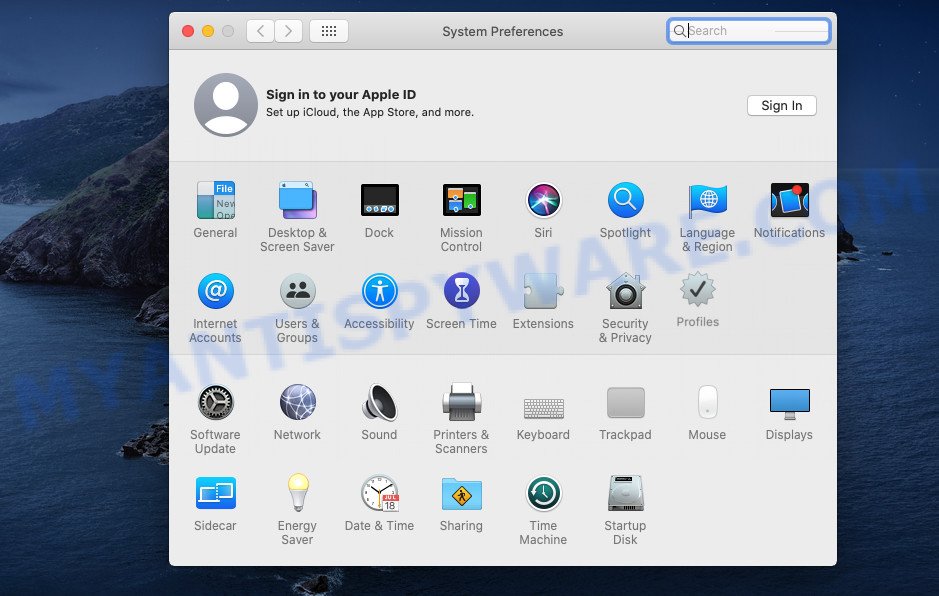
In System Preferences, click Profiles, then select a profile associated with QuantityExact.
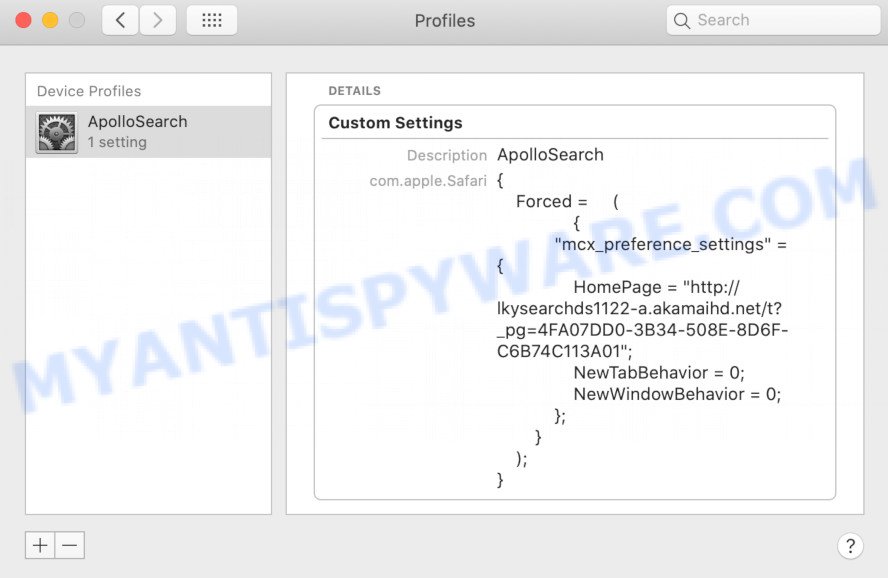
Click the minus button ( – ) located at the bottom-left of the Profiles screen to remove the profile.
Note: if you do not see Profiles in the System Preferences, that means there are no profiles installed on your Mac, which is normal.
Delete QuantityExact associated software by using the Finder
The next step to remove PUPs, browser hijackers and adware is to delete unknown and questionable apps. Using the Finder you can do this quickly and easily. We advise you not to skip this step, as it often helps to get rid of web-browser redirects and intrusive advertisements.
Open Finder and click “Applications” as shown in the figure below.
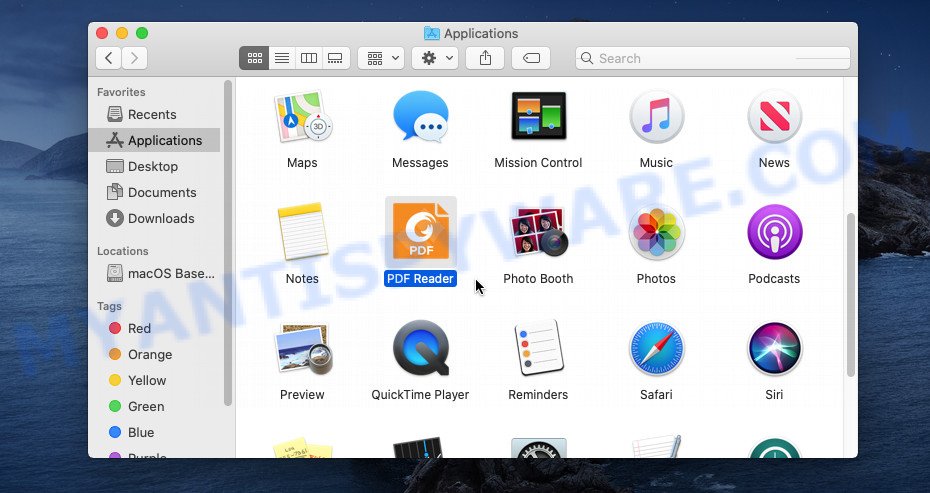
You will see a list of software installed on your MAC. We recommend to pay maximum attention to the program you installed last. Most probably, it is the QuantityExact adware. If you are in doubt, you can always check the program by doing a search for her name in Google, Yahoo or Bing.
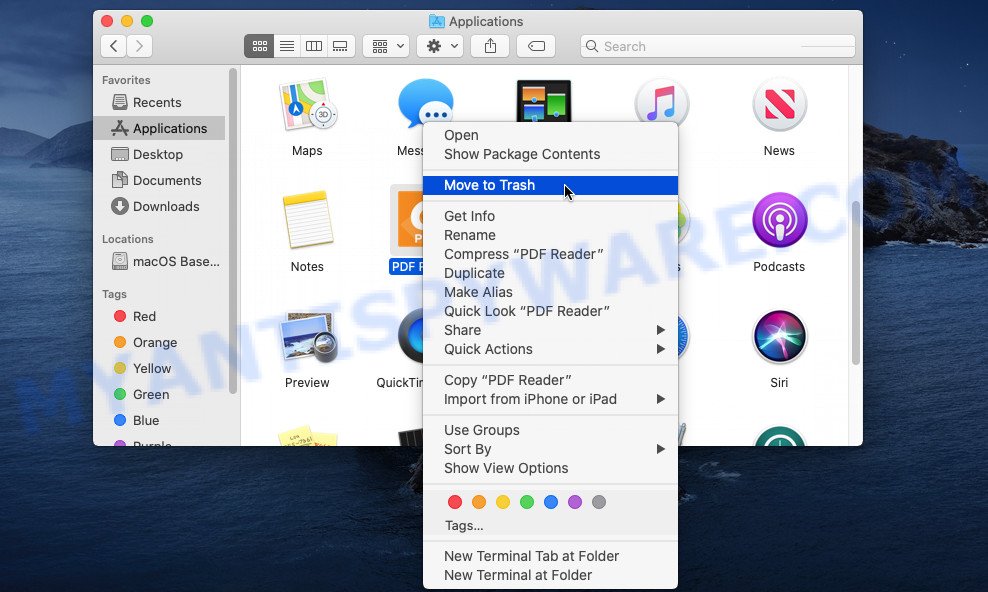
After the program which you need to uninstall is found, simply right click on its name, and select “Move to Trash”.
Don’t forget, choose Finder, then “Empty Trash”.
Remove QuantityExact related files and folders
Now you need to try to find QuantityExact related files and folders, and then delete them manually. You need to look for these files in certain directories. To quickly open them, we recommend using the “Go to Folder…” command.
QuantityExact creates several files, these files must be found and removed. Below is a list of files associated with this unwanted program.
- /Library/LaunchDaemons/com.QuantityExact.system.plist
- ~/Library/LaunchAgents/com.QuantityExact.service.plist
- /Library/Application Support/.(RANDOM)/System/com.QuantityExact.system
- ~/Library/Application Support/.(RANDOM)/Services/com.QuantityExact.service.app
Some files created by QuantityExact are hidden from the user. To find and delete them, you need to enable “show hidden files”. To do this, use the shortcut CMD + SHIFT + . Press once to show hidden files and again to hide them. There is another way. Click Finder -> Applications -> Utilities -> Terminal. In Terminal, paste the following text: defaults write com.apple.finder AppleShowAllFiles YES

Press Enter. Hold the ‘Option/alt’ key, then right click on the Finder icon in the dock and click Relaunch.
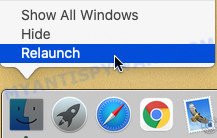
Click on the Finder icon. From the menu bar, select Go and click “Go to Folder…”. As a result, a small window opens that allows you to quickly open a specific directory.

Check for QuantityExact generated files in the /Library/LaunchAgents folder

In the “Go to Folder…” window, type the following text and press Go:
/Library/LaunchAgents
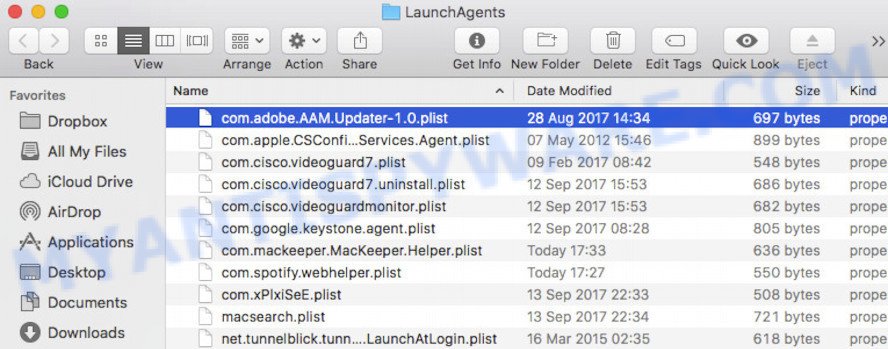
This will open the contents of the “/Library/LaunchAgents” folder. Look carefully at it and pay special attention to recently created files, as well as files that have a suspicious name. Move all suspicious files to the Trash. A few examples of files: com.machelper.plist, com.QuantityExact.service.plist, installapp.plist, macsearch.plist, com.google.defaultsearch.plist, , com.net-preferences.plist and search.plist. Most often, browser hijackers, adware software and potentially unwanted programs create several files with similar names.
Check for QuantityExact generated files in the /Library/Application Support folder

In the “Go to Folder…” window, type the following text and press Go:
/Library/Application Support
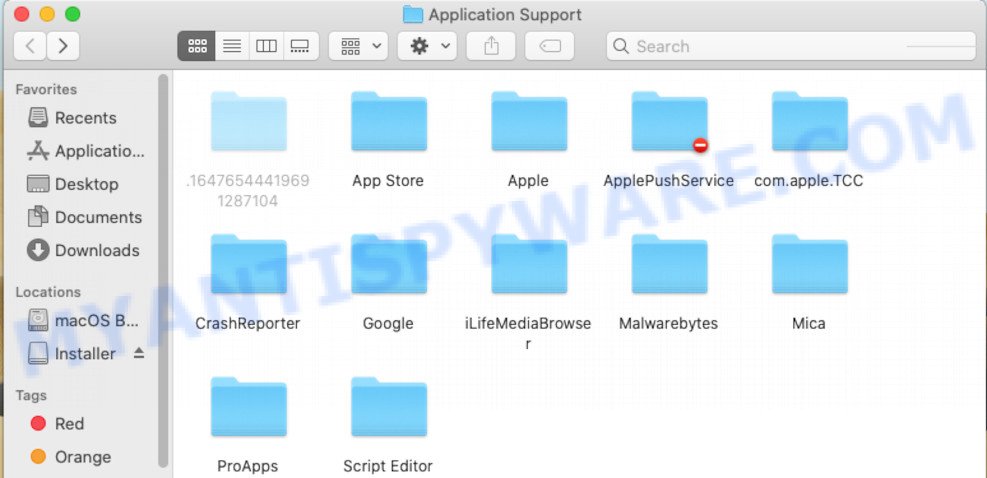
This will open the contents of the “Application Support” folder. Look carefully at its contents, pay special attention to recently added/changed folders and files. Check the contents of suspicious folders, if there is a file with a name similar to com.QuantityExact.system, then this folder must be deleted. Move all suspicious folders and files to the Trash.
Check for QuantityExact generated files in the “~/Library/LaunchAgents” folder

In the “Go to Folder…” window, type the following text and press Go:
~/Library/LaunchAgents

Proceed in the same way as with the “/Library/LaunchAgents” and “/Library/Application Support” folders. Look for suspicious and recently added files. Move all suspicious files to the Trash.
Check for QuantityExact generated files in the /Library/LaunchDaemons folder
In the “Go to Folder…” window, type the following text and press Go:
/Library/LaunchDaemons

Carefully browse the entire list of files and pay special attention to recently created files, as well as files that have a suspicious name. Move all suspicious files to the Trash. A few examples of files to be deleted: com.search.system.plist, com.macsearch.system.plist, com.machelper.system.plist, com.QuantityExact.system.plist and com.installapp.system.plist. In most cases, browser hijackers, potentially unwanted programs and adware create several files with similar names.
Scan your Mac with MalwareBytes
We suggest using MalwareBytes AntiMalware to scan the Mac computer for browser hijackers, PUPs and adware software. This free utility is an advanced malware removal application designed by (c) Malwarebytes lab. This program uses the world’s most popular anti malware technology. It’s able to help you remove ransomware and other security threats from your Mac computer for free.
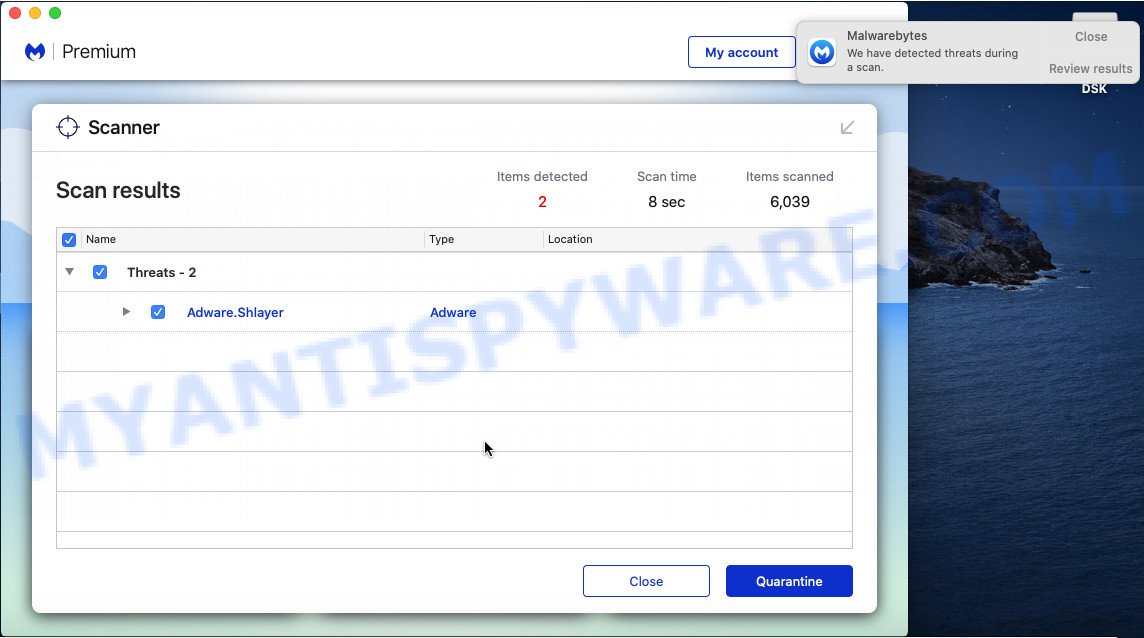
- Installing the MalwareBytes Anti-Malware is simple. First you will need to download MalwareBytes Anti-Malware on your machine from the link below.
Malwarebytes Anti-malware (Mac)
21024 downloads
Author: Malwarebytes
Category: Security tools
Update: September 10, 2020
- Once downloading is complete, please close all software and open windows on your MAC. Run the downloaded file. Follow the prompts.
- The MalwareBytes AntiMalware will run and display the main window.
- Further, click the “Scan” button for checking your MAC system for the QuantityExact . This task may take quite a while, so please be patient. While the MalwareBytes Anti-Malware is checking, you can see count of objects it has identified either as being malware.
- When MalwareBytes AntiMalware is done scanning your MAC, MalwareBytes AntiMalware will show you the results.
- Make sure all items have ‘checkmark’ and press the “Remove Selected Items” button.
- Close the Anti Malware and continue with the next step.
Remove QuantityExact from Safari, Chrome, Firefox
This step will show you how to get rid of harmful extensions. This can remove QuantityExact adware software and fix some surfing issues, especially after adware infection.
You can also try to remove QuantityExact adware software by reset Chrome settings. |
If you are still experiencing problems with QuantityExact adware removal, you need to reset Firefox browser. |
|
How to stay safe online
Use an adblocker utility like AdGuard will protect you from malicious advertisements and content. Moreover, you can find that the AdGuard have an option to protect your privacy and stop phishing and spam web-pages. Additionally, ad-blocking apps will help you to avoid intrusive pop ups and unverified links that also a good way to stay safe online.
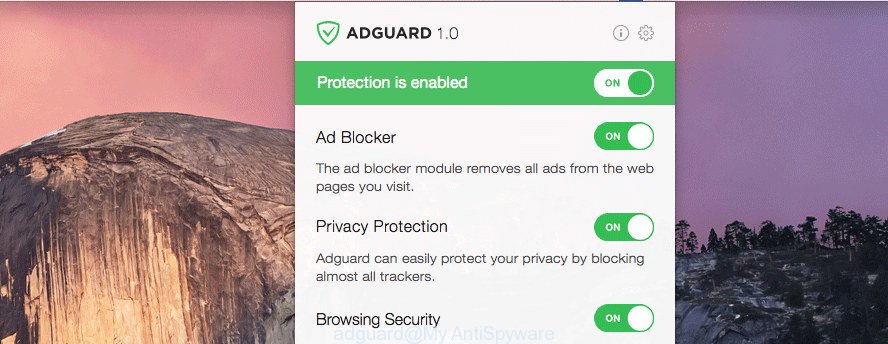
- Visit the page linked below to download AdGuard.
AdGuard for Mac download
3782 downloads
Author: © Adguard
Category: Security tools
Update: January 17, 2018
- When downloading is finished, run the downloaded file. You will see the “Setup Wizard” program window. Follow the prompts.
- Once the installation is done, click “Skip” to close the install application and use the default settings, or click “Get Started” to see an quick tutorial which will help you get to know AdGuard better.
- In most cases, the default settings are enough and you do not need to change anything. Each time, when you run your Apple Mac, AdGuard will start automatically and stop annoying advertisements, block malicious and misleading web-sites.
To sum up
We suggest that you keep MalwareBytes AntiMalware (to periodically scan your machine for new adware softwares and other malicious software) and AdGuard (to help you stop intrusive popup advertisements and harmful web pages). Moreover, to prevent any adware, please stay clear of unknown and third party software.
If you need more help with QuantityExact adware related issues, go to here.
